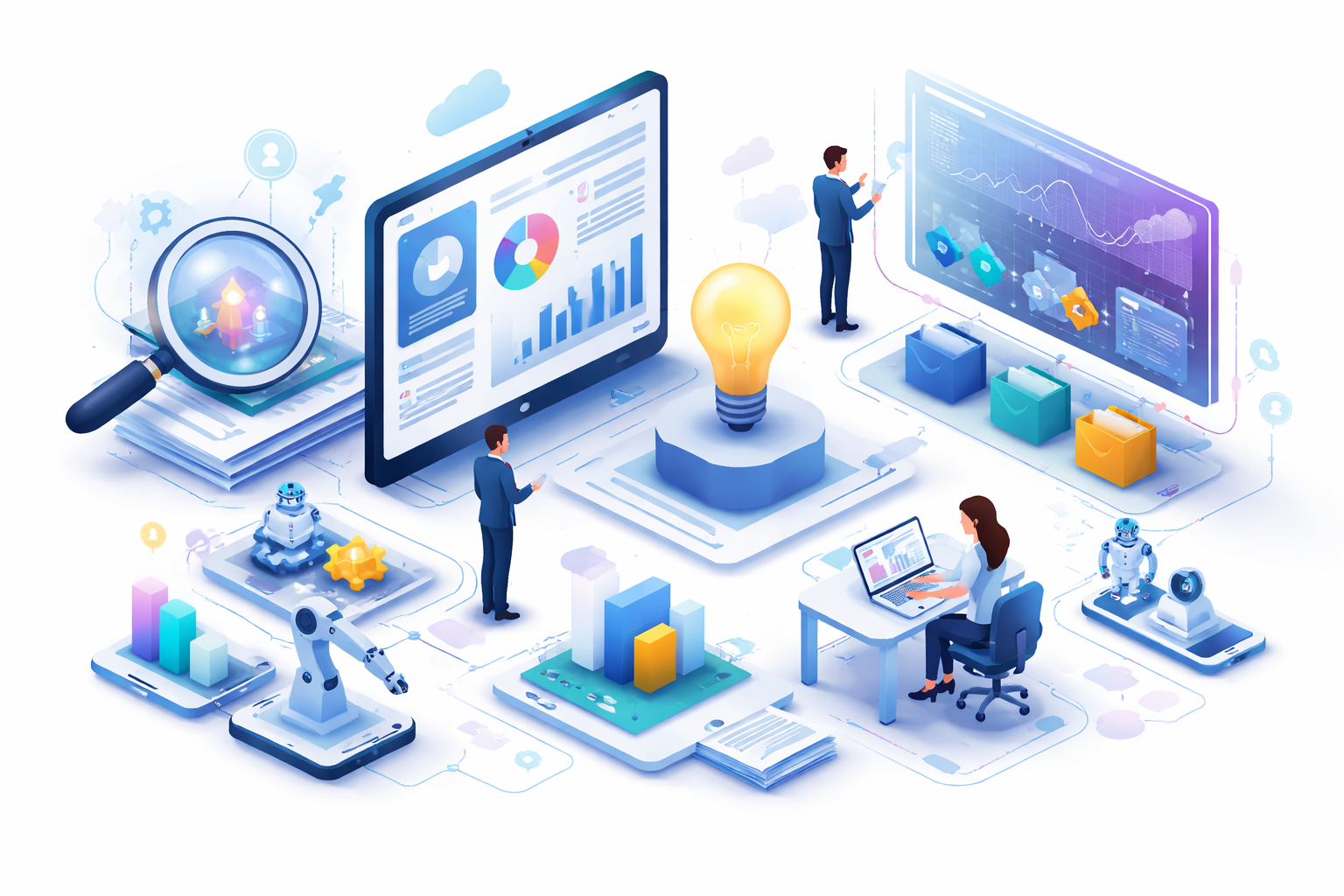Understanding the horizons of technology can provide companies with a roadmap to innovation, offering strategic guidance in a rapidly evolving landscape. In this context, Horizon 2 (H2), Horizon 3 (H3), and Horizon 4 (H4) technologies represent different stages of emerging and future technologies. These concepts guide businesses in planning for, investing in, and ultimately capitalizing on technological advancements.
Horizon 2 Technologies: The Emerging Phase
Horizon 2 technologies encompass those innovations that are just beginning to disrupt established markets or create new ones. They are typically in their growth phase, proving their worth in the market, and beginning to gain traction. Examples may include technologies that are currently emerging but not yet fully mainstream, such as drone delivery or advanced robotics. Companies looking to stay current and competitive need to pay attention to H2 technologies, as early adoption or adaptation can offer significant strategic advantages.
Horizon 3 Technologies: The Next Generation
Horizon 3 technologies represent the next wave of innovation. These are the concepts that are currently in development, with promising potential but not yet market-proven. This might include innovations that are on the cutting edge of technological advancements but not yet ready for widespread adoption, such as quantum computing or advanced gene editing techniques. Investing in H3 technologies can position companies as leaders in their industries, driving the direction of future innovation.
Horizon 4 Technologies: The Radical Future
Horizon 4 technologies represent radical, transformative ideas that could reshape entire industries. These are typically far-off concepts that are currently more speculative than concrete. H4 technologies might include concepts like artificial superintelligence or advanced nanotechnology, innovations that could bring about a significant shift in society's understanding of what's technologically possible. Engaging with H4 technologies helps companies to future-proof themselves, preparing for potential revolutionary changes that could disrupt existing business models.
In conclusion, H2, H3, and H4 technologies represent a continuum of technological advancement, guiding businesses in their strategies for innovation, investment, and future-proofing. Engaging with these concepts allows businesses to stay ahead of the curve, strategically guiding their development efforts, and ensuring their ongoing competitiveness in an ever-evolving technological landscape.
Future-Proofing: Staying Ahead of the Curve
The relentless march of technological progress waits for no one. Organizations that fail to adapt to new technologies often find themselves outpaced by more agile competitors. Paying close attention to H2, H3, and H4 technologies can provide crucial insights into how industries might evolve, enabling businesses to plan for these changes rather than reacting to them. By anticipating and embracing these future developments, businesses can safeguard their viability and thrive in an ever-changing technological landscape.
The Role of Startups in Driving Innovation
Startups, often at the forefront of innovative ideas and technologies, especially H2, H3, and H4 technologies, play a critical role in driving business innovation. These agile entities take risks, explore uncharted territories, and offer cost-effective solutions, providing established businesses access to innovations that could reshape their operations. Engaging with startups can help businesses stay current with emerging trends, diversify their portfolios, and foster a culture of innovation.
Engaging with Startups: A Strategic Move
Engaging with startups strategically can be beneficial in various ways. This could involve establishing partnerships, direct investments, acquisitions, or even mentoring through incubator programs. These methods provide startups with much-needed guidance and resources while allowing businesses to stay close to innovation. Additionally, hosting innovation challenges or hackathons encourages startups to create solutions for specific problems, fostering community and collaboration.
Investment and Resource Allocation: A Guiding Light
Understanding the trajectory of emerging and future technologies helps businesses make strategic decisions about investments and resource allocation. It provides a roadmap of which skills will become valuable, where research and development funds should be funneled, and potential partnerships or acquisitions that could accelerate growth. By investing early in these technologies, businesses can often secure a cost advantage over competitors who enter the market later.
Risk Management: Navigating the Uncertain Future
Awareness of H2, H3, and H4 technologies is instrumental in identifying and mitigating potential risks. Companies must consider the impact of obsolescence, regulatory changes, or new competitive threats that could disrupt their business models. Engaging with these technologies early allows businesses to prepare for these changes, increasing their resilience and ensuring continued success.
Sustainability and Responsibility: Leaders of the New World
Many H2, H3, and H4 technologies focus on critical areas of sustainability and social responsibility—such as clean energy or ethical AI. By embracing these technologies early, businesses can establish themselves as leaders in these areas, attracting eco-conscious consumers and future-proofing against increasingly stringent regulations.
The Role of Traction Technology
In this context, Traction Technology plays a significant role in helping large companies navigate the intricate startup ecosystem and leverage H2, H3, and H4 technologies. Traction can identify promising startups, assess their potential, facilitate effective collaborations, accelerate innovation, provide educational resources, and help mitigate risks associated with investing in or partnering with startups. They serve as a catalyst for innovation and collaboration between large corporations and startups, helping companies capitalize on the opportunities offered by H2, H3, and H4 technologies.
How Traction Technology can help:
.png)
Discovery of Relevant Startups: Traction Technology helps established companies discover relevant advanced technologies aligned with their strategic goals and innovation areas. It curates startups based on different industries, technology trends, and areas of business interest, making it easier to find potential partners or investment opportunities and share this information across the enterprise.
Collaboration and Engagement Tools: Traction Technology offers tools that help manage the engagement process with startups. It provides a structured approach to evaluating, tracking, and managing interactions with multiple startups across multiple project and pilots, improving efficiency and collaboration.
Data-Driven Insights: The platform provides data-driven insights to help make informed decisions. This includes information on startup funding, growth indicators, customers and competitors, which can help in assessing potential startup partnerships.
Innovation Pipeline Management: Traction Technology aids in managing the innovation pipeline. It helps companies capture ideas and request and track innovation projects, monitor progress, and measure results in real time, promoting a culture of continuous innovation.
Track KPIs and Generate Custom Reports: Effortlessly track Key Performance Indicators (KPIs) with real time dashboards and generate custom reports tailored to your organization's unique requirements. Stay
.png)
ahead of the curve by monitoring projects progress and engagement.
By leveraging a platform like Traction Technology, established companies can gain a competitive edge, driving their digital transformation journey and adapting to the fast-paced business environment. It supports the integration of startup agility, innovation, and customer-centric approach into their operations, which is critical for success in the digital age.
About Traction Technology
We built Traction Technology to meet the needs of the most demanding customers, empowering individuals and teams to accelerate and help automate the discovery and evaluation of emerging technologies. Traction Technology speeds up the time to innovation at large enterprises, saving valuable time and money by accelerating revenue-producing digital transformation projects and reducing the strain on internal resources, while significantly mitigating the risk inherent in working with early-stage technologies.
Let us share some case studies and see if there is a fit based on your needs.
Traction Report Update: 23 ways AI could transform your business in 2023.
For more information
● Explore our software and research services.
● Download our brochure: How to Evaluate Enterprise Startups.
● Watch a demo of our innovation management platform and start your free trial.

Conclusion
A focus on H2, H3, and H4 technologies isn't just about keeping up—it's about leadership, innovation, and foresight. It's about creating a future in which your business doesn't just survive, but thrives. Traction Technology, with its capabilities and resources, can help businesses take that first step forward into the exciting realm of emerging and future technologies, setting them on a path to long-term success.








.webp)